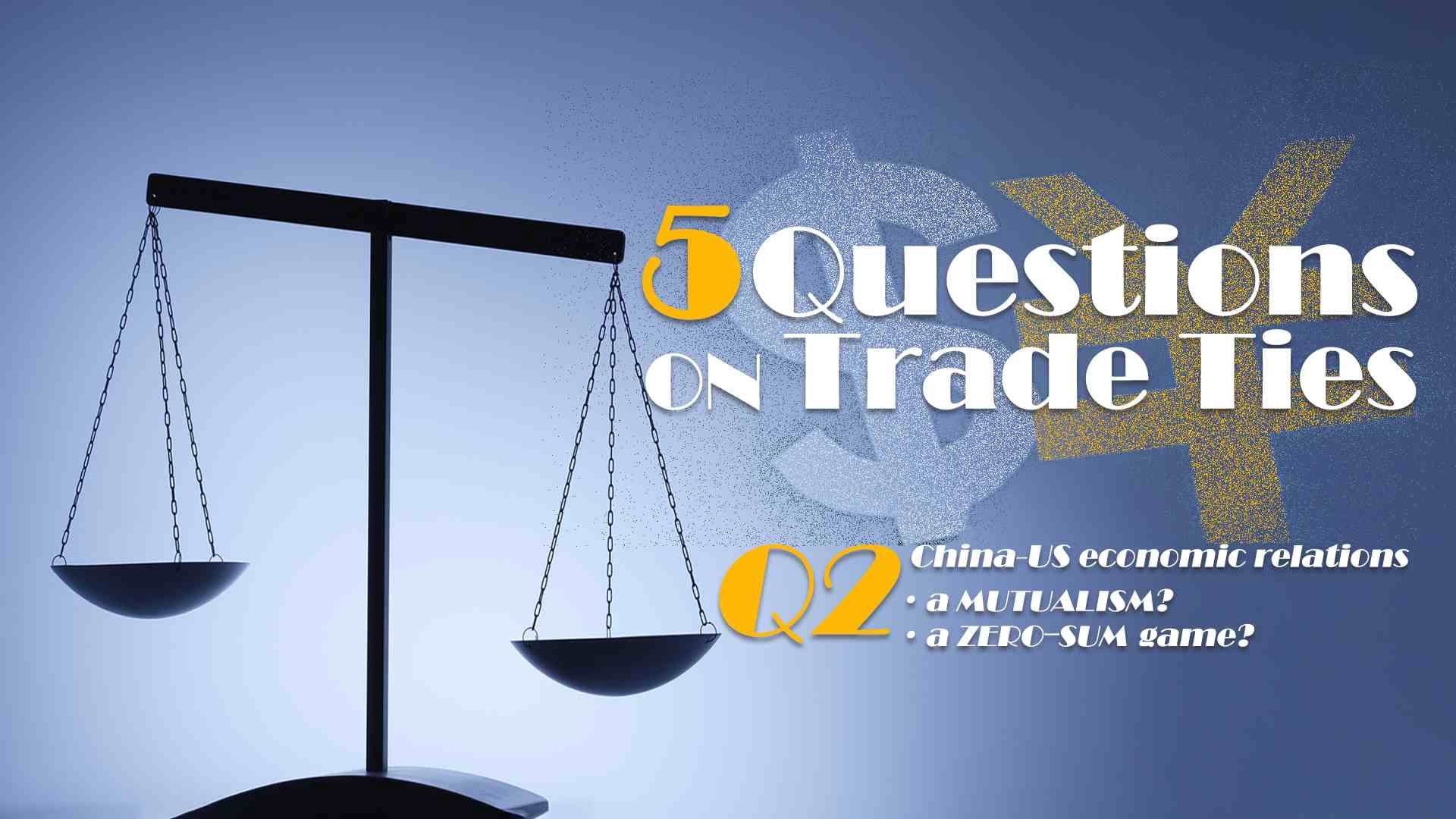
Business
20:59, 10-Apr-2018
5 Questions on Trade Ties: Is China-US economic relation a win-win or a zero-sum game?
CGTN's Liang Rui and Gao Songya

China-US trade relations have been under scrutiny during the past month like never before. Beyond tough talk and tariff threats, the better way to resolve trade disputes should be focusing on how to make each other better off by focusing on what each party does best.
China’s investment plays a significant role in the US economy, at over 16.9 billion US dollars in 2016, official data showed, making it the fifth largest investor in the US.

VCG Photo.
VCG Photo.
Meanwhile, the creation of US jobs to some extent relies on Chinese investment. Overseas Chinese companies hired 91,000 local employees in the US in 2016, triple the employment number in 2013.
For China, American high-tech products have given consumers a chance to enjoy high-quality and high-tech products. Joint ventures with American enterprises have also boosted China's local development and brought advancements to Chinese technology.
Differences are bound to remain in trade between the world’s largest developed and developing economy. However, it's basically fair to say that seeking to complement each other’s strengths and weaknesses is more beneficial than erecting barriers.

China needs to import high value-added technology and capital-intensive products from the US. Goods with core technology from the US account for 22 percent of all goods China purchased from the US last year.
The US has moved its labor-intensive industries to less-developed countries, from which it now imports low-tech goods, and most go through China, where parts of the manufacturing assembly and packaging take place.
“Trade is not a zero-sum game, since doing business with China has lowered the overall US deficit,” Wang Jianhui, general manager of the R&D department at Capital Securities, told CGTN.
(CGTN’s Wang Yue also contributed to the story.)
Related stories
5 Questions on Trade Ties: What is the true story behind China-US trade figures?

SITEMAP
Copyright © 2018 CGTN. Beijing ICP prepared NO.16065310-3
Copyright © 2018 CGTN. Beijing ICP prepared NO.16065310-3